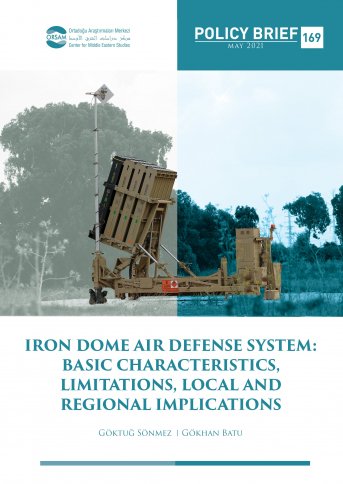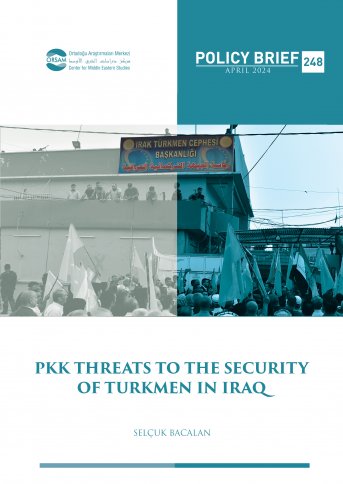
Iron Dome Air Defense System: Basic Characteristics, Limitations, Local and Regional Implications
The role of Israel's qualitative military superiority has frequently been highlighted in its repeated military gains against the Arab States since 1948, which are heavily criticized in the context of international law by international organizations. During World War II, Germany's advance toward Palestine through North Africa prompted the British to provide military training to a group of Jews. As of the end of World War II, the anti-British struggle of the Jews started. The decisive factors for the 1948 Arab-Israeli War were the increased capacity of the Jewish groups, which used to carry out terrorist attacks against the British in Palestine before 1948, the fighting experience of the Haganah forces gained against the Nazis in Europe, the inexistent fighting experience of the Arab States, and the military gains made before the first cease-fire. Israel’s military capacity was the main decisive factor in many turning points, such as the destruction of the Egyptian, Jordanian and Iraqi aircrafts on the ground during the 1967 Arab-Israeli War and the armored advance by Sharon toward Cairo in 1973. One could argue that the technical capability and know-how in terms of military and espionage are the main factors that ensured Israel’s survival in the region, in addition to the external support it received. It is possible to make such an argument against a historical backdrop, which consists of problematic Israeli practices in the region in terms of international law, the Resolution 242 (1967) of the United Nations Security Council that calls for Israel to withdraw within its borders before 1967, and the United Nations General Assembly Resolution 379, which describes Zionism as a form of racism.
The Iron Dome Air Defense System is one of the most important military elements of Israel's deterrence capability in the region. The Iron Dome system, which is considered to be superior to widely-known air defense systems such as the Patriot with its basic technical data, constitutes one of the main defense capabilities of Israel, who has troubled relations with its neighbors and has struggles with other actors in the region; and it is the most important component of the multi-layered air defense system together with the David's Sling system. The period after the Second Intifada called for the need to develop this system. While common methods used in the First Intifada were civil disobedience and tools such as sticks, stones and slings; the increasing capacity of the regional actors that oppose the Israeli policies in Palestine, who resorted to the increased use of small arms, explosives and rockets after the Second Intifada, forced Israel’s hand to respond accordingly. Nevertheless, it should also be highlighted that the Iron Dome, despite its worldwide reputation as the most successful air defense system, does not provide full protection. That is the reason why actors such as Hamas and the Islamic Jihad prioritize saturation strikes. Firing up simple rockets in large numbers in a volley, makes total defense impossible and its psychological impact grows as some rockets penetrate the Iron Dome and hit Israeli settlements. This is a favored and prioritized method, since Hamas and Hezbollah have an increased inventory of rockets, thanks to the transfer thereof through the territories of Iran, Iraq, Syria and Lebanon, which has also enabled the development of sophisticated homing missiles in recent years. The formation of this corridor enabling such a capacity was also a major factor in the assassinations of al-Muhandis and Qasem Soleimani.








